Nikon Z50 II vs Nikon Z50: what are the differences?
With the new Nikon Z50 II finally available, is now the ideal time to snap up a Z50 or are you better off buying its replacement?
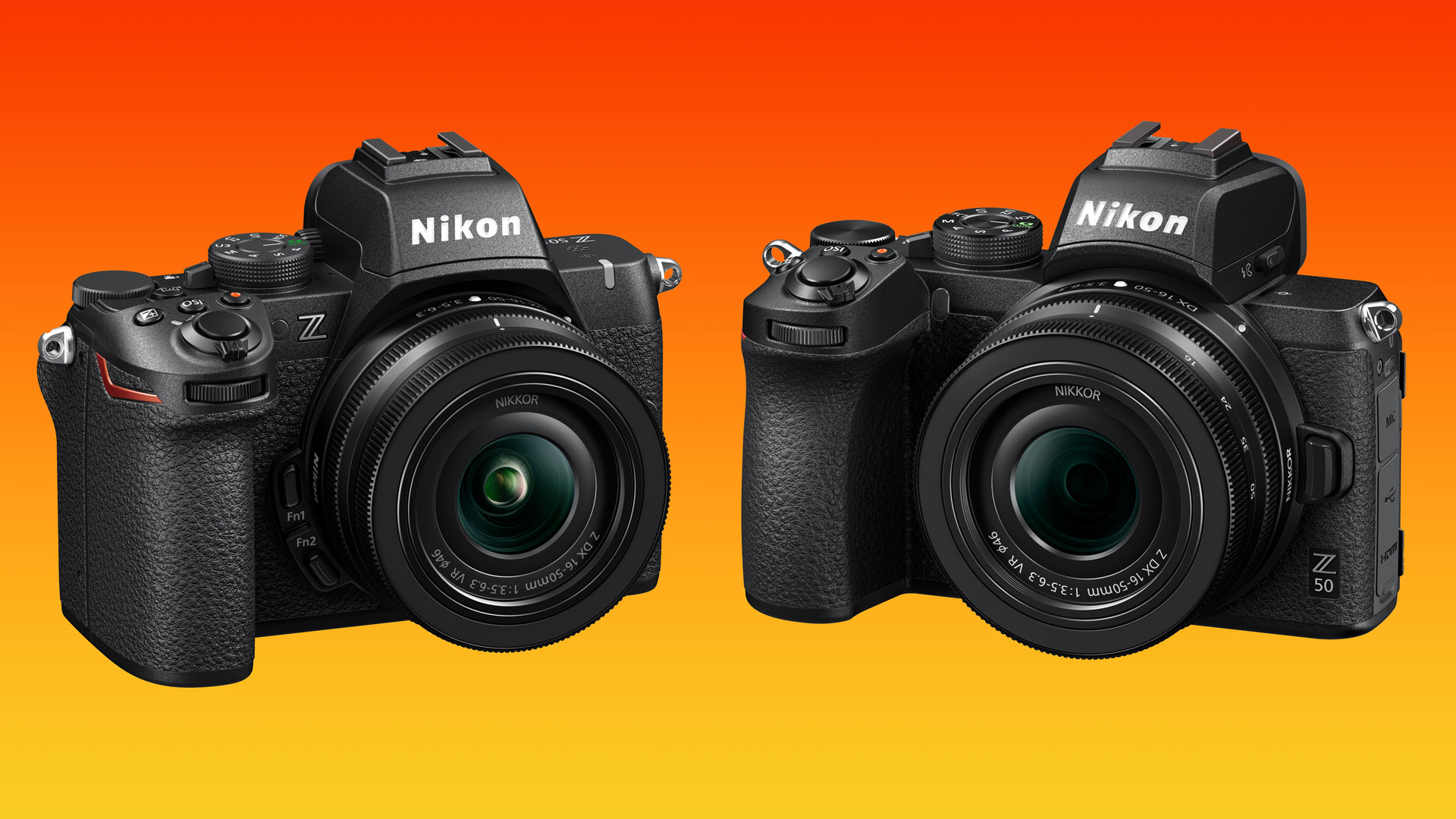
A little over five years since Nikon released the original Z50 and its follow-up, the Z50 II, has been announced. So if you were already considering the Z50 is it worth snapping up the original model while you have the chance? And if you already have a Z50, is it worth upgrading to the shiny new version?
On the face of it, there are more similarities than differences between the two models, as you'll see in our exhaustive Nikon Z50 II report as well as in the comparison table below. But dig a little deeper and the differences become more apparent…
Nikon Z50 II vs Z50: Specifications
| Header Cell - Column 0 | Nikon Z50 II | Nikon Z50 |
|---|---|---|
| Sensor | 20.9MP APS-C CMOS (DX) | 20.9MP APS-C CMOS (DX) |
| Processor | Expeed 7 | Expeed 6 |
| Autofocus system | Hybrid phase/contrast 209 points | Hybrid phase/contrast 209 points |
| ISO range | 100-51,200 (exp. 204,800) | 100-51,200 (exp. 204,800) |
| In-body image stabilization | No | No |
| Electronic image stabilization | Yes (improved) | Yes |
| Video | 4K 60p (crop) / 4K 30p HLG/N-Log | 4K 30p No Log option |
| Viewfinder | 0.39-in 2.36-million-dot OLED, 1000 cd/m2 brightness | 0.39-in 2.36-million-dot OLED, 500 cd/m2 brightness |
| LCD | 3.2-in articulated, 1,040k dots | 3.0-in flip-down, 1,040k dots |
| Max burst | 11fps (30fps JPEG High-Speed Frame Capture+) | 11fps |
| Max shutter | 1/4000 sec | 1/4000 sec |
| Memory card(s) | 1x SD UHS-II | 1x SD UHS-I |
| Size | 127 x 96.8 x 66.5 mm | 134.5 x 93.5 x 43.5mm |
| Weight | 465g body only | 395g body only |
Nikon Z50 II vs Z50: Sensor
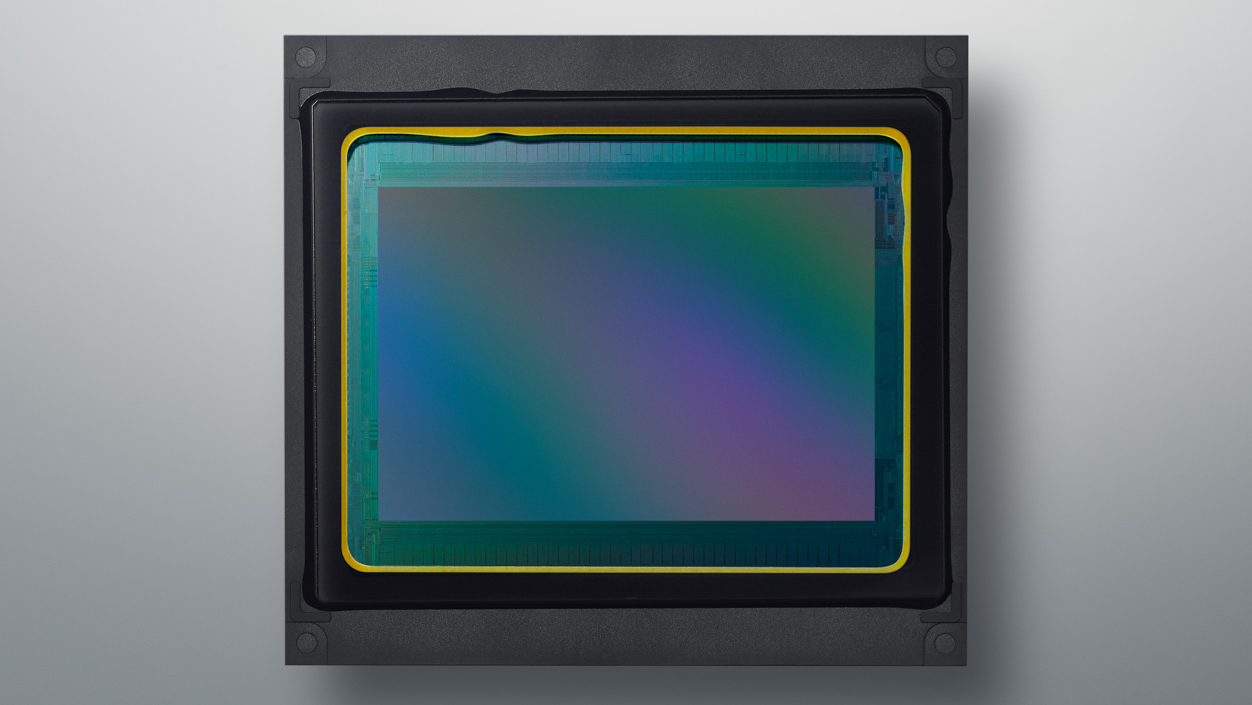
Both cameras use the same DX sensor, which generates 20.9Mp images and is embedded with 209 phase-detection autofocus points. In fact, identical sensors are used throughout the entire Z-series range of DX-sensor cameras, which also includes the viewfinderless Z30 and retro-styled Zfc, which use a physically smaller 'APS-C' sized sensor compared with the FX-sensor full-frame models higher up the range.
Nikon Z50 II vs Z50: Autofocus
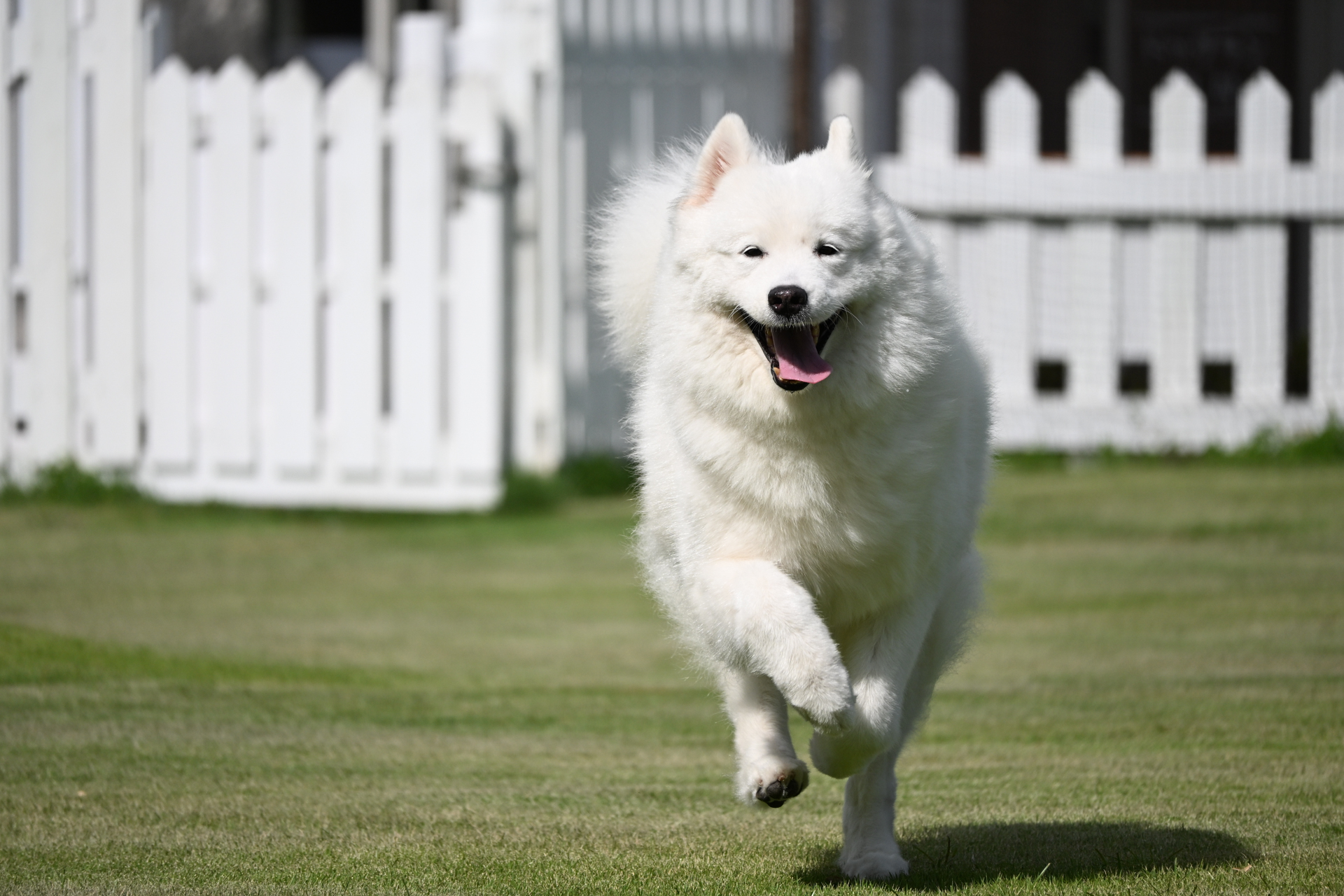
The main major internal difference between the two cameras basically boils down to the Z50 II's processor being one generation newer, having an Expeed 7 rather than an Expeed 6 at its heart. But what a difference it makes, none more so than in autofocus performance.
It endows this compact, consumer-friendly DX mirrorless with much of the autofocus performance of Nikon's flagship full-frame Z8 and Z9 cameras, tracking nine types of subjects, including people, animals and all manner of vehicles, with uncanny accuracy. It's simply streets ahead of the Z50, which only has basic people/pet autofocus.
The Expeed 7 processor gives the Z50 II several other performance improvements, which I'll detail in further sections below.
Nikon Z50 II vs Z50: Body and controls
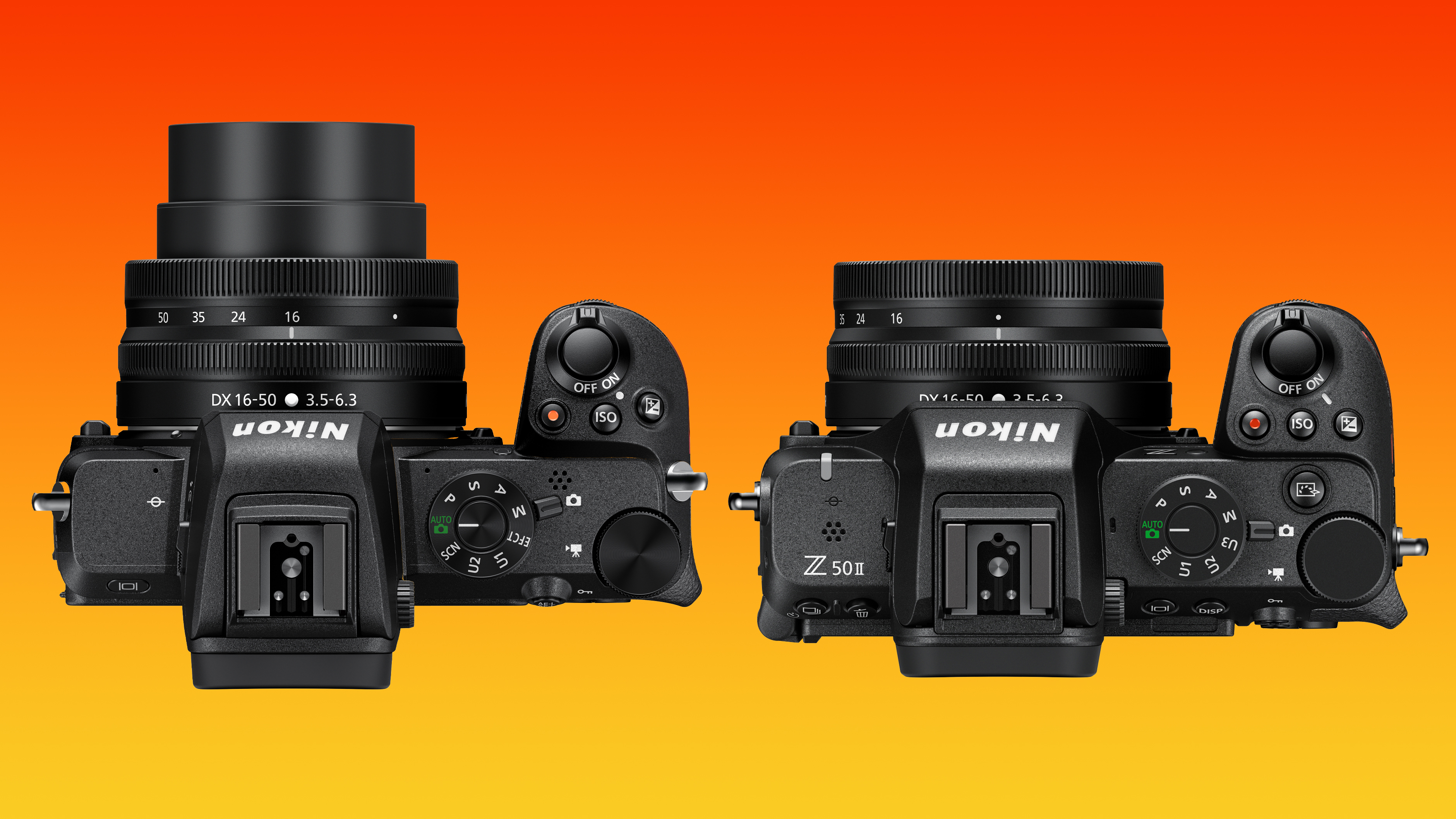
They are both small cameras, certainly compared to the full-frame mirrorless further up the range, but the Z50 II is slightly larger in all three dimensions, measuring 127 x 96.8 x 66.5 mm compared to 126.5 x 93.5 x 60 mm, and it's a tad heavier too by about 70 grams, tipping the scales at 465g compared to 395g.
As a result, the new camera has been remodeled and has improved ergonomics. The re-engineered grip on the new camera feels more comfortable to hold, while the eyecup on the back protrudes less (and can't easily be removed, as on the Z50 it had a nasty habit of slipping off when you didn't want it to).
The control layout on Z50 II follows those on its bigger full-frame siblings much more closely, with more physical buttons, whereas the original Z50 relied on a number of 'soft' buttons on the rear display.
And in fact, the Z50 II has a brand-new button not found on any other Nikon camera. The Picture Control buttons gives fast access to – you've guessed it – picture controls, which are essentially the settings that the camera uses when processing images in-camera. So how useful this is completely depends on whether you shoot JPEGs rather than Raw files. Of course, the Z50 also supports Picture Controls, but using them requires delving into the menu system.
Speaking of Picture Controls, the Z50 II has 31 types compared to the Z50's 28 types, with the new additions being Flat Monochrome, Deep Tone Monochrome, and Rich Tone Portrait.
Nikon Z50 II vs Z50: ISO sensitivity

On the face of it, both cameras have the same unexpanded ISO range of IS0100-51,200. However, the images from the Z50 II are crisper and clearer at higher ISO settings, exhibiting less image noise. So as the sensors are the same, it is purely down to the improved processing grunt of the Expeed 7 that these superior images are produced in the Nikon Z50 II.
Nikon Z50 II vs Z 50: Burst shooting
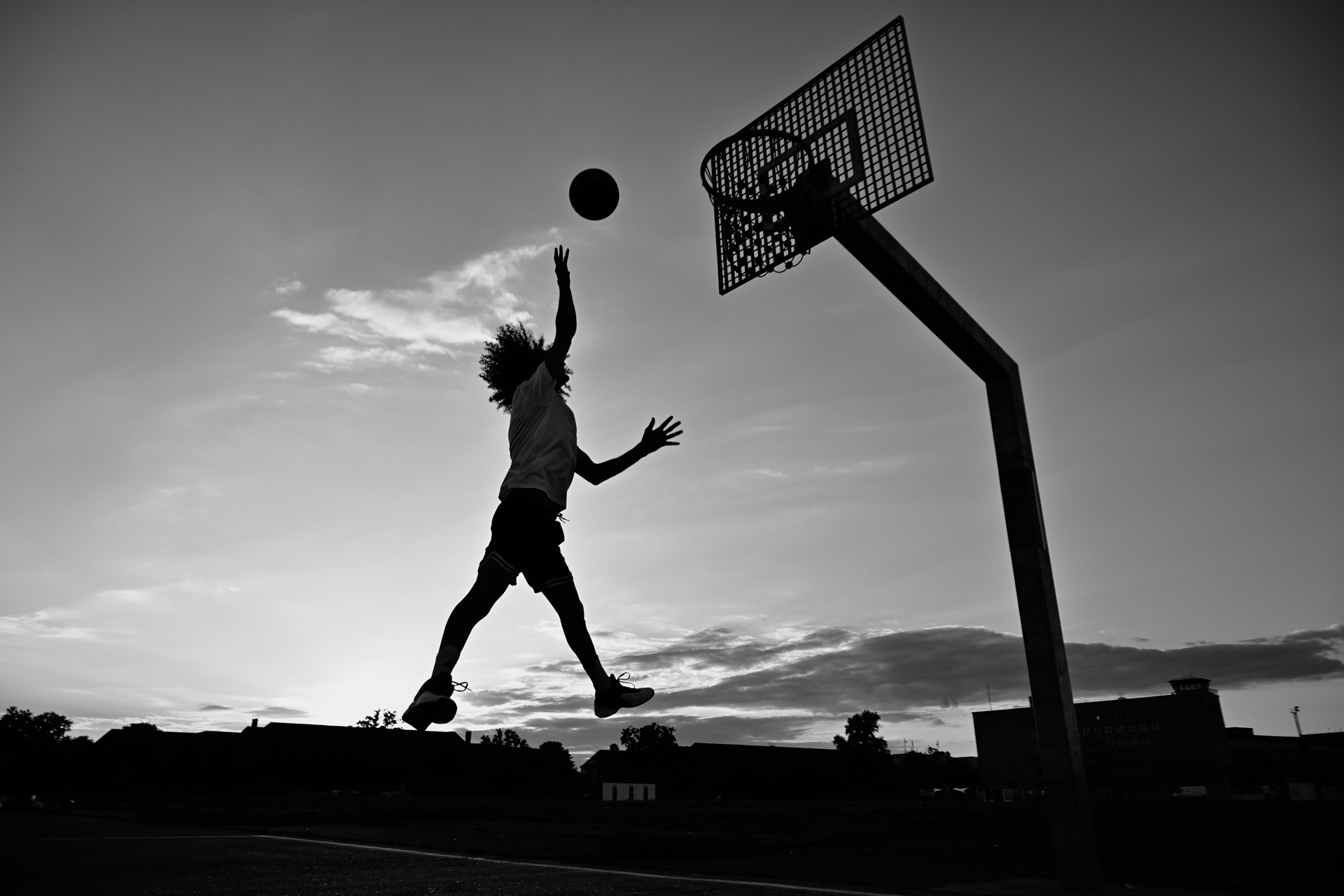
Again, on the surface, both cameras have a maximum shooting rate of 11fps when using the mechanical shutter. However, the Z50 II has a High-Speed Frame Capture+ mode, which increases the frame rate to up to 30fps by using an electronic shutter.
The caveat is that it can only capture JPEGs using this mode, rather than Raw files. But this can also be used in conjunction with a Pre-Release Capture function that begins to record images before you take a photo, so is incredibly useful for helping ensure that you don't 'miss the moment'. This trick mode works by capturing images in the background as soon as the shutter is half-pressed, with full autofocus and autoexposure, and you have a full second's worth of images to choose from before the shutter is fully depressed.
Nikon Z50 II vs Z50: Video
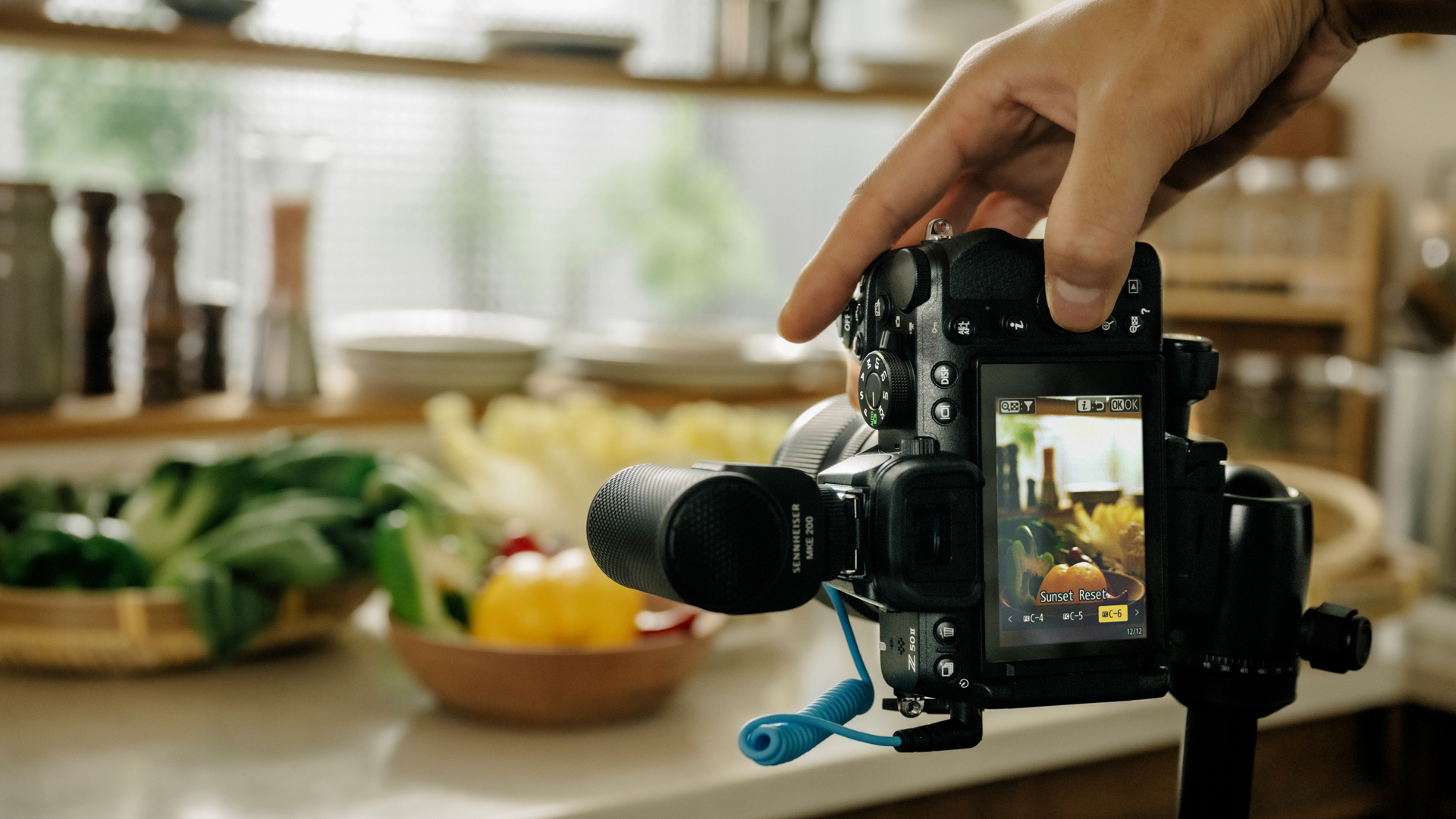
Both cameras are capable of shooting 4K video, but the Z50 II can shoot at up to 60fps for 2x slo-mo, albeit with a 1.5x crop, whereas the Z50 tops out at the standard 30fps frame rate, uncropped in both cameras. The Z50 II uses oversampled 5.6K video to produce a final video image that's crisper and clearer. In both cameras, the video ISO range is 100-25,600.
They are both capable of 4x slo-mo when shooting in Full-HD mode, however, the Z50 II offers a 2x digital zoom, where the camera crops progressively into sensor area to still provide a high-quality Full-HD resolution. Video can be zoomed into smoothly at 11 preset speeds for sleek transitions. There's also a Product Review mode, which recognizes when objects are shown to the camera, and automatically switches focus from the presenter to the object and back again when it's removed.
The Z50 II supports N-Log (Nikon-Log) recording and a full 10-bit codec, to offer greater flexibility when color-grading video, while the Z50 only supports standard (non-log) video recording – akin to only shooting JPEGs rather than Raw files in stills shooting.
Another video-friendly feature is that the Z50 II is automatically recognized by computers and smartphones as a video device when connected via USB, whereas the Z50 requires connection via Nikon’s Webcam Utility software.
Both cameras possess a microphone jack, to connect an external mic, but only the Z50 II has a headphone jack, which also doubles as remote release socket, and is compatible with the new Nikon МС-DС3 remote release.
Nikon Z50 II vs Z50: Stabilization
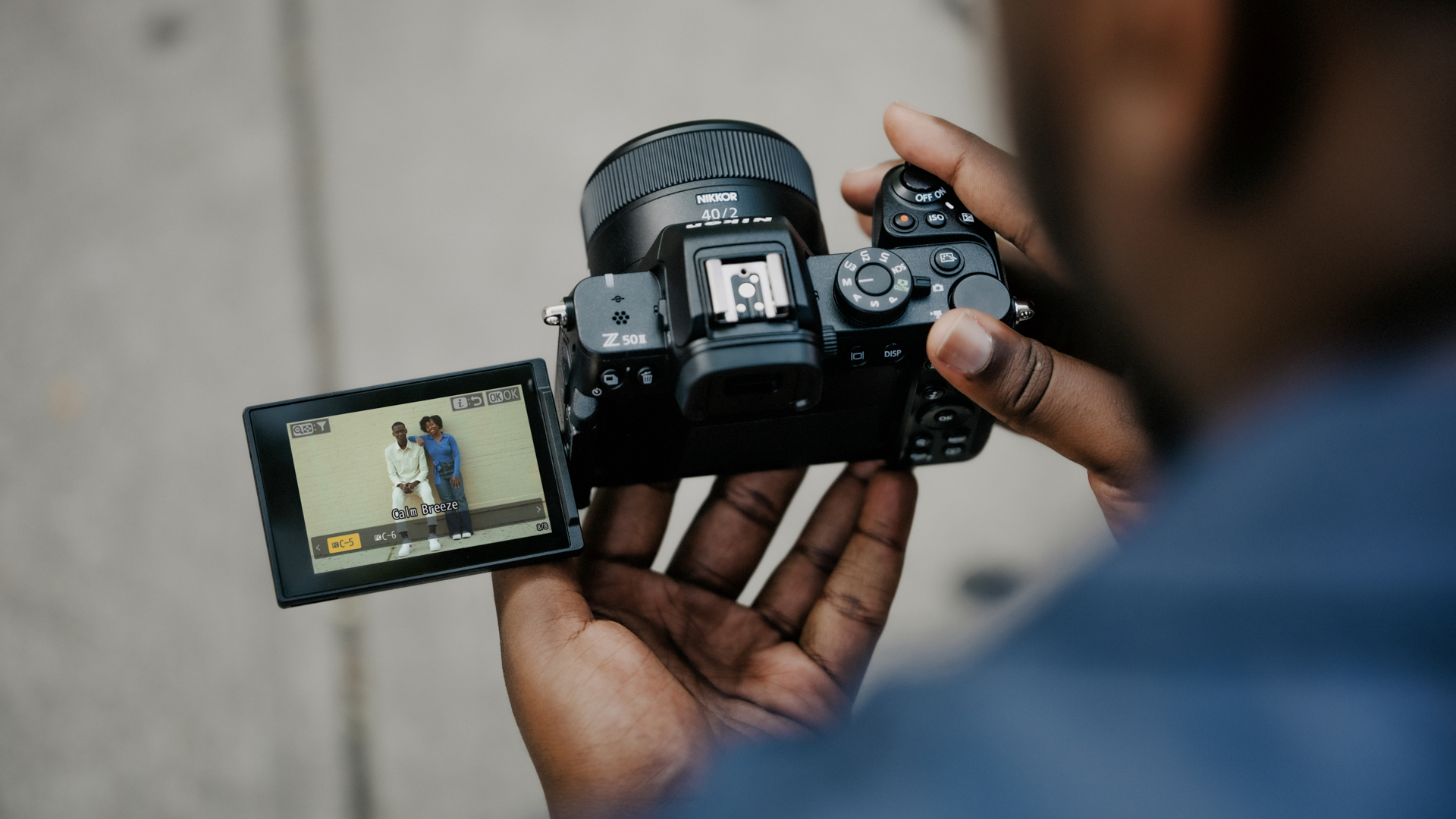
If you were hoping for the second-generation of DX-sensor Z-series cameras to have in-body image stabilization, then you'll be disappointed. Like its predecessor, the Z50 II relies on Vibration Reduction (VR) lenses for stabilized images when shooting stills.
That said, many Z-series lenses for DX cameras have very effective VR, including the dinky Z DX 16-50mm f/3.5-6.3 VR kit lens.
Both cameras do offer electronic stabilization when shooting movies, by selecting which pixels are used to create each frame of video to smooth out any shakes, but this has been improved in the Z50 II.
Nikon Z50 II vs Z50: Memory card
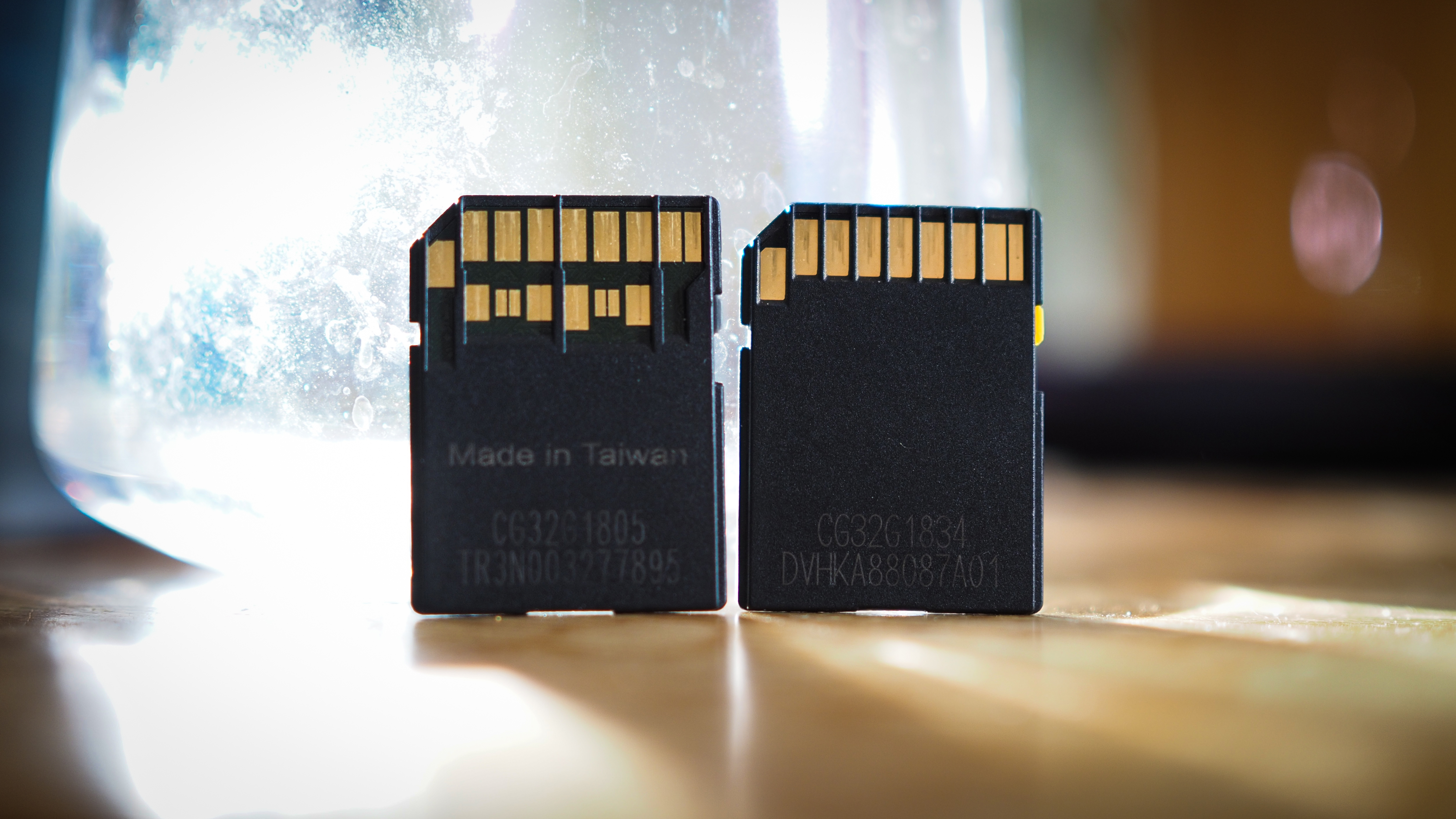
Both cameras accept SD cards, but the Z50 II supports faster UHS-II cards while the Z50 only supports the UHS-I standard. This means that the Z50 II can write to the card faster (so there is less buffering time after you finish taking a photograph or recording a video), which is undoubtedly what makes its 30fps High-Speed Frame Capture+ mode possible.
This is also a factor when it comes to transferring your cards onto a computer or hard drive, as the faster UHS-II standard means you can download files much more quickly.
When it comes to transferring images, the Z50 II has one further advantage; along with the Nikon Z6 III, these are the only cameras to so far be compatible with Nikon's new Nikon Imaging Cloud service. This automatically uploads images from the camera to cloud storage whenever it's in the range of a Wi-Fi network, among other benefits.
Nikon Z50 II vs Z50: Viewfinder & rear screen
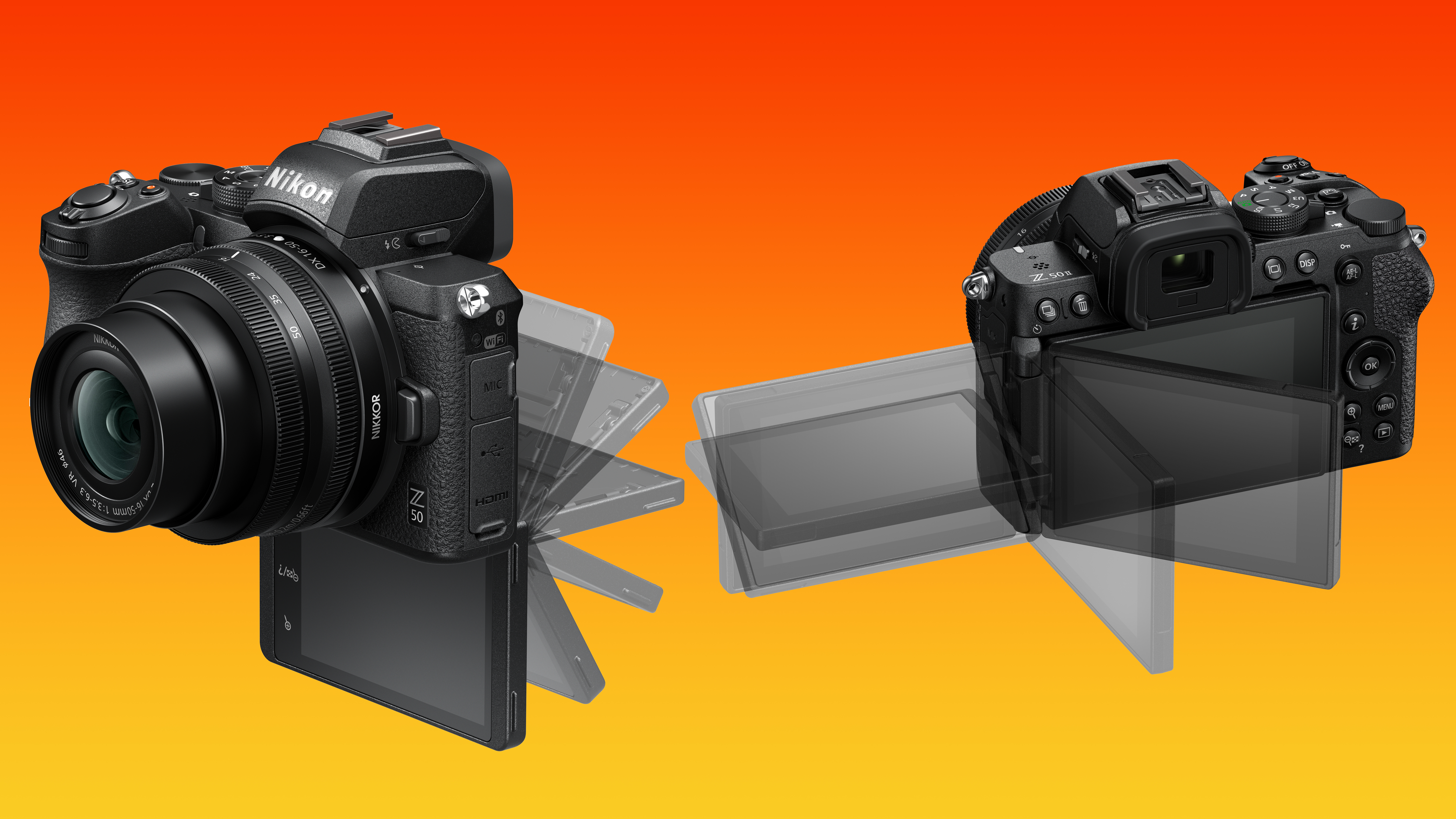
The resolution for both the rear LCD and EVF are exactly the same, with a 1.04 million-dot rear screen and 2.36 million-dot OLED viewfinder.
However, they're not identical. The Z50 II's EVF is twice as bright as the Z50's, the technical measure being 1000 cd/m2 as opposed to 500 cd/m2 brightness. The upshot is that it's easier to see the Z50 II's display when the ambient light is bright.
And while the rear LCD touchscreen might have the same resolution on both models, the Z50 II's is physically bigger, measuring 3.2in on the diagonal rather than 3in. The Z50 II's screen is of the 'proper' vari-angle variety that pivots out the side and twists up and down, making it easier to shoot from up high, down low, or selfies from the front. Contrast this with the curious flip-down mechanism of the original camera that was only any good for when shooting selfies – and even then, not much cop if you were using a tripod as most of the screen would be obscured by the tripod column.
The Z50 II's text and icons also rotate when shooting in portrait orientation so they can be read more naturally, which is another nice touch on the new camera.
Nikon Z50 II vs Z50: Overall

While the resolution, headline frame rate, ISO range and lack of in-body image stabilization remain the same in cameras, the Nikon Z50 II has come on leaps and bounds when it comes to all other areas of performance, thanks mainly to the updated Expeed 7 processor.
It is by far the superior camera, and could easily handle high-demand photography genres like sports or wildlife photography while giving lenses a handy 1.5x telephoto boost thanks to the crop sensor. In fact, we'd go as far as to say it's the mirrorless equivalent of the D500 DSLR, Nikon's highest-performance DX DSLR.
The only conceivable reason to buy a Z50 over a Z50 II is down to cost. However, at the time of writing, the typical price of a Z50 was generally more expensive than the newer camera is sells for. A couple of retailers were undercutting the price slightly, but only by a handful of dollars/pounds/euros, and certainly not enough to warrant the purchase of the five-year-old camera.
Of course, that may well change as stores scramble to get rid of old stock when they realize that they are otherwise likely to end up boxes of Z50s gathering dust, so keep an eye on the best Z50 deals as they update below!
But really, unless the Z50 comes down to a silly price, you are way better off with a Z50 II – and I advise you do it today (if not sooner!) because demand is almost certain to outstrip supply, as is already the case in Japan.
And finally, if you already own a Z50, is it worth upgrading to the Z50 II? Well, it's by far the most advanced DX-sensor camera that Nikon has in its range, and if you're committed to the DX lens ecosystem then it'll serve you well for many years to come. I'd say it's worth serious consideration if any type of action photography is your bag, or if you shoot video.
But the Z50 is still a very capable camera – and if your favored genres are shooting landscapes, portraits and the like, then the new camera doesn't offer a huge advantage.
Still not made your mind up? We have lots more about the Z50 II. Don't miss our in-depth Z50 II report, see how it sold out immediately in Japan and read about its exclusive remote release…
Get the Digital Camera World Newsletter
The best camera deals, reviews, product advice, and unmissable photography news, direct to your inbox!

Prior to joining digitalcameraworld.com as Guides Editor, Adam was the editor of N-Photo: The Nikon Magazine for seven years, and as such is one of Digital Camera World's leading experts when it comes to all things Nikon-related.
Whether it’s reviews and hands-on tests of the latest Nikon cameras and lenses, sharing his skills using filters, tripods, lighting, L brackets and other photography equipment, or trading tips and techniques on shooting landscapes, wildlife and almost any genre of photography, Adam is always on hand to provide his insights.
Prior to his tenure on N-Photo, Adam was also a veteran of publications such as PhotoPlus: The Canon Magazine, so his wealth of photographic knowledge isn’t solely limited to the Big N.
